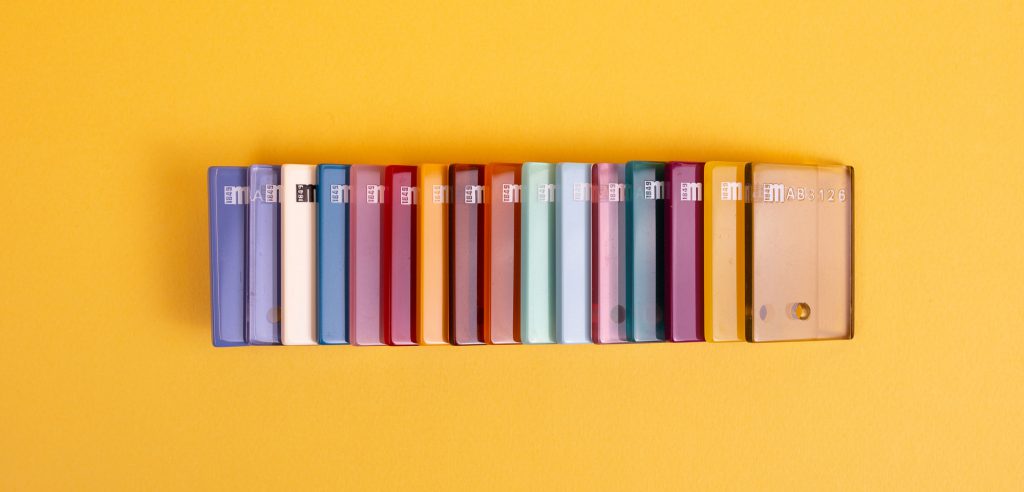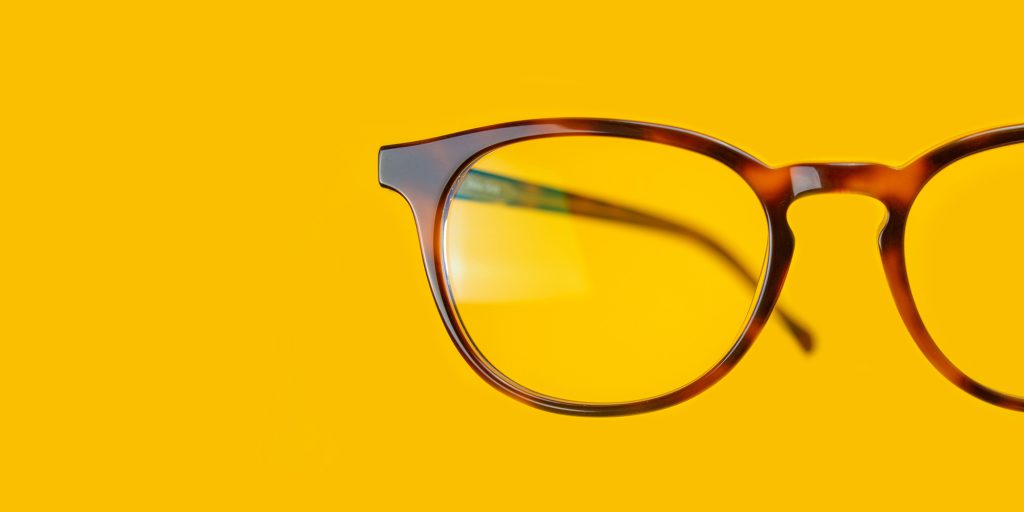Acetate frames for glasses have been around for a few generations. These universal frames have a pretty large fan base among glasses wearers since they provide strength, style, comfort, and flexibility. There is truly no comparison when it comes to eyewear frames.
In this guide, we will delve into everything you need to know about acetate glasses, including:
- The definition of acetate
- The top benefits of acetate glasses
- Acetate versus conventional plastic eyeglass frames
- Whether or not acetate glasses are the best option for you

What is Acetate?
First, what are acetate glasses?
Acetate is a plant-based material created from welded layers of cellulose. This very durable material is constructed from plastic-like sheets that have been cut, formed, and polished.
The material’s strength, durability, and weight set acetate eyewear and acetate frames apart from frames made of alternative plastics or other materials. The acetate process tends to take longer than the construction process for conventional plastic frames because it involves fusing multiple sheets instead of using a single plastic mold. While the acetate process is lengthier, it produces a much higher-quality product.
Benefits of Acetate Glasses
Acetate eyeglasses and acetate glasses frames have several benefits:
- Hypoallergenic material. One of the best aspects of acetate glasses is that acetate is a hypoallergenic material, so it probably won’t cause any allergic reactions. You can comfortably wear these hypoallergenic acetate frames all day, and they are unlikely to irritate or react with your skin.
- Eco-friendly. Acetate is an environmentally-friendly alternative to conventional plastics made from petroleum. Acetate frames are created with cellulose, a material found in plants; thus, these glasses frames are formed from renewable and natural sources.
- Lightweight and comfortable. As your glasses are resting on your face for most of the day, the frames should be comfortable. Luckily, acetate is lightweight, so it is one of the best materials to use for frames. You might not even realize you are wearing eyeglasses most of the time when you are wearing acetate frames. As a result, say goodbye to the irritating pressure on the bridge of your nose and those pesky headaches you get from wearing glasses for too long!
- Durable. Since glasses help many people read and function on a daily basis, durability is essential. Many conventional eyeglass frames are vulnerable to breakage, but acetate eyeglass frames are durable enough to withstand daily wear and tear.
- Flexible. Acetate is a very flexible material, which helps your acetate sunglasses and eyeglasses frames last longer. Cellulose fibers bend fairly easily when force is applied to them, giving the acetate material great flexibility. The flexibility of acetate glasses allows them to mold to your face for maximum comfort. If you’re looking for an excellent investment, acetate frame sunglasses fit the bill, as they don’t break easily.
- Rich design. Acetate frames are designed with aesthetics and fashion in mind. As such, they are usually stylish and fashionable. While colors and designs are typically painted or sprayed on conventional plastic frames, acetate frames result in richer designs. Since they are made from colored blocks of cellulose and then layered with multiple sheets, the colors and designs are much more vibrant and complex than conventional frames
Acetate vs. Plastic Eyeglass Frames
Are you still wondering about the differences between acetate frames and plastic eyeglass frames?
With conventional plastic eyeglass frames, designs and colors are typically painted or sprayed on the plastic. Due to the single layer of the color or design, simple wear and tear causes this layer to fade away over time. Therefore, conventional plastic does not retain the quality of a design.
On the other hand, acetate retains designs easily since the acetate is formed from layers of colored block sheets. These layers act as buffers and protect the original color of the frames. Acetate also allows more variety in finishes and colors; you can even achieve a range of transparency by only coloring some of the plastic layers.
Conventional plastic frames are also much less flexible and durable than acetate frames, making them more prone to breaking at the slightest pressure. Acetate is a plastic-like material formed from nylon, making it more durable, flexible, and stronger than conventional plastic. It is also more resistant to pressure and can bend further before breaking.

Are Acetate Glasses Best for You?
Still wondering if acetate glasses are the best option for you? Acetate glasses offer style, fashion, and cool designs and colors. Acetate is also environmentally-friendly, hypoallergenic, durable, and lightweight. What more could you ask for from a pair of eyeglasses?
If you want more information about acetate glasses, acetate lenses, and acetate frames, please contact Felix Gray to learn more. We also have a variety of computer glasses as well as anti-glare glasses to help you protect your eyesight.
